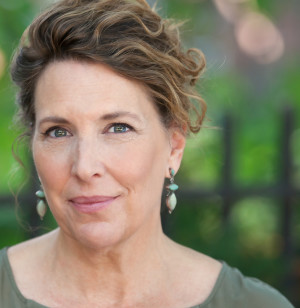Laura Pirie
Principal, Pirie Assoc.
Age: 56
Experience: 29 years
Laura Pirie works with developers, academic institutions and communities in her role as founder of New Haven-based architects Pirie Assoc. When she’s not wearing her design hat, Pirie leads group expeditions to Mexico and Peru for Conscious Pioneer, which sponsors personal development retreats. A Northern California native, Pirie founded her New Haven-based firm in 2002 after a stint at Cesar Pelli & Assoc.’s local office. She received her master of architecture degree from Yale University, where she now teaches on the graduate level.
Q: Before we get into your architectural background, can you tell CR’s readers the concept behind Conscious Pioneer?
A: We use ancient archeological sites inhabited by past civilizations to help people connect with what they want to do in the world, and figure out anything that’s standing in their way. Certain aspects of those civilizations were built with healing in mind and we use that as growth for people. We do basic retreats, one to the pyramids north of Mexico City, six-day retreats over a long weekend, so busy working people get away from their office, and a two-week trip to Peru.
People get to know each other on these getaways. Each trip has its own dynamics. On the six-day trips, we have a hacienda in a small town around the pyramidal national park. We start the day with yoga or different movements and stretching activities, and then we go out in the pyramids and do some exploration. And then in the afternoon, people go out on their own. Generally we ask people not to take cameras and electronic devices on the site and leave that all behind. The electronic devices pull our attention away. Sometimes people respect that, sometimes they don’t.
Q: What’s Pirie Assoc.’s niche in the architecture industry?
A: We’re a design-oriented practice, but really what we do is focus on the mission of the organization with the intention to create environments that help people do what they do better. It’s no accident, because it follows my training and what we do with Conscious Pioneer, to not think of those environments as passive places, but environments that can be purposely created to help us do what we do better. People say, “Wait – can an environment do that?” If you’re walking through a museum and look at a painting, you can feel the emotions of the artist. You don’t need to look at the description. Environments can be designed with the same intentionality for us to get at that. We engage in a deep discovery process with our clients, where we elicit from them what their goals are, and that’s where we start our work.
Q: How are trends in urbanization affecting designs?
A: Complete streets or placemaking usually means retail or community (spaces) on the street level and residential units above. The problem I see in looking across downtowns is what’s happening to all that retail that’s sitting empty. Something I’m working on with different groups such as Connecticut Main Street Center and municipalities is thinking about what is that next-generation mixed use, and what those program functions might be. What other uses can create higher-quality jobs and activate the street? I look back to old manufacturing models. Clean high-skill manufacturing could be an interesting combination with housing. Can we get some of our big manufacturers like Pratt & Whitney to decentralize some of their offices?
Q: What’s the most frustrating part of your job as an architect?
A: The biggest feedback we get from people is, “I had no idea architects do what you do.” Architects are so bad at describing what we do. We’re really good at describing what we make. Where we’ve differentiated (at Pirie Assoc.) is we connect based upon what we make, but also why we make. It’s important that there’s a connection and an understanding. It empowers the client to understand their environment and be able to utilize it more completely.
Q: Is the Yale Law School project a good example?
A: Yale Law School had been in one building since its inception. It’s a classic Gothic campus building and all of the graduates feel very connected to that building. Quite simply, the law school has outgrown its space, and space in the center campus is lean. The law school had been occupying a nearby building that was a dorm for a few uses. So, they came to us with a solution in mind to upgrade the dorms, and use some of the other spaces for the centers and a few seminar rooms.
If we just give them the solution that’s requested, we’re not doing our job. With deeper discussion, we realized they were missing certain size classrooms, clinic space and places for students to hang out, study, work in groups and generally be comfortable. When students are in the Sterling Law Building, they’re right there with their professors and it can be hard to relax. So we worked with the law school to develop the program to accommodate both student life and academic needs. The process led to the concept of “two buildings, one school,” as the phrase was coined by the dean. That’s my favorite moment, when we lay something out and the (solution) comes from the client.
Pirie’s Top Five Places to Have a Coffee Outdoors:
- Oaxaca, Mexico
- Cusco, Peru
- Orvieto, Italy
- Sonoma, California
- Dunton Hot Springs, Colorado







